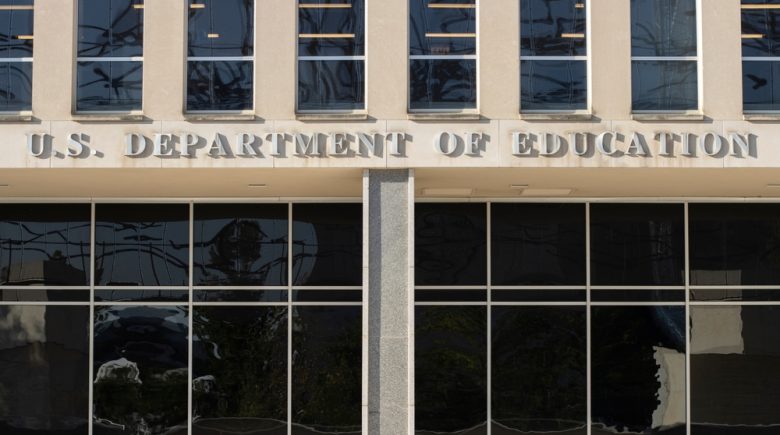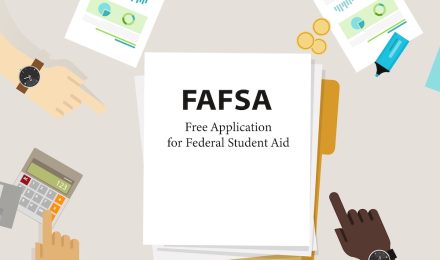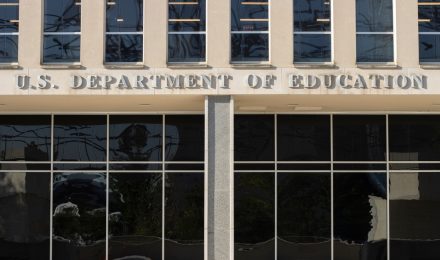The U.S. higher education landscape is entering a period of major transition. In 2025, Congress approved sweeping changes to federal student loan programs as part of a broader budget and reconciliation package. These adjustments are some of the most significant in over a decade, directly affecting millions of current and future borrowers. For families, graduate students, and financial aid officers, understanding the scope and timing of these reforms is essential.
This article explains the major program changes, the rationale behind them, and what borrowers should prepare for as the new system takes effect.
Why the Overhaul Happened
For years, critics of the federal student loan system argued that programs such as Parent PLUS and Grad PLUS encouraged overborrowing without sufficient guardrails. Parent PLUS loans, in particular, allowed families to borrow up to the full cost of attendance, sometimes saddling low-income households with debt that far exceeded their ability to repay. Similarly, Grad PLUS loans fueled concerns that graduate and professional programs were raising tuition unchecked, knowing students had access to nearly unlimited federal credit.
In response, lawmakers chose to replace these open-ended lending structures with capped borrowing. The intent is to protect families, reduce federal exposure to defaults, and push institutions to restrain costs. But these same changes introduce new challenges for students who rely heavily on federal loans to finance higher education.
End of Grad PLUS
One of the headline reforms is the elimination of Grad PLUS loans. For decades, graduate students could borrow the full cost of attendance beyond Stafford loan limits. This option is now being phased out. In its place, Congress created a revised unsubsidized Direct Stafford loan system for graduate students, with fixed annual and aggregate borrowing limits.
The new structure seeks to balance access with caution. Students will still be able to borrow directly from the federal government, but the maximum amounts will be far lower than the virtually unlimited Grad PLUS program. For professional fields such as medicine, law, and advanced business degrees, this raises difficult questions about how students will fund programs that routinely cost $60,000 or more per year. Private lending markets and institutional aid are expected to fill part of this gap, but not all students will find affordable alternatives.
Parent PLUS Loan Caps
Another major change is the introduction of borrowing caps for Parent PLUS loans. Beginning with the 2026–27 academic year, parents will face a $20,000 annual limit per student, with a $65,000 lifetime cap. Families who previously relied on Parent PLUS loans to cover nearly the full cost of college will need to explore other sources of financing.
This represents a profound shift. For years, Parent PLUS loans have been a safety valve for middle-class and lower-income families whose children attended institutions with high tuition. Limiting this source of credit may protect parents from unsustainable debt, but it could also reduce access to certain colleges for families without substantial savings or scholarships.
Aggregate Borrowing Caps
Beyond individual program changes, Congress has also imposed an aggregate borrowing limit across federal student loans. The new cap stands at approximately $257,500 per borrower (excluding Parent PLUS loans). While this amount is still substantial, it places a ceiling on long-term borrowing for students who pursue multiple degrees or extended educational paths.
For example, a student who completes a bachelor’s degree, a master’s program, and a professional doctorate could easily approach this new threshold. Once the cap is reached, no additional federal borrowing will be available, regardless of program or need.
Timing of Implementation
The new rules are not retroactive, but they will roll out over the next two academic years. Most changes are scheduled to take effect starting July 1, 2026. Borrowers who already have outstanding PLUS loans will not see those loans canceled or reduced. However, future borrowing will be constrained under the new system.
This transition period creates both opportunities and risks. Current undergraduates planning to attend graduate school may want to evaluate whether borrowing sooner under existing rules makes sense, though doing so carries long-term repayment obligations. Financial aid offices will need to carefully advise students and parents about how these changes will affect multi-year funding strategies.
Implications for Students and Families
The practical effects of these reforms will vary depending on family income, the type of institution attended, and the level of education pursued. For many undergraduates, the impact will be minimal, since most already borrow below the new caps. The biggest shifts will be felt among graduate students and families accustomed to using Parent PLUS loans as a flexible funding source.
- Graduate students in high-cost fields such as medicine, dentistry, or law will likely face increased reliance on private loans, which often carry higher interest rates and fewer protections.
- Families with limited savings will need to make more careful decisions about which institutions are financially realistic under the new caps.
Institutional Responses
Colleges and universities are also bracing for the ripple effects. Institutions that have historically leaned on PLUS loans to bridge the gap between tuition and family contributions may need to rethink pricing models, increase institutional aid, or risk reduced enrollment. Professional schools in particular may need to justify their tuition levels more aggressively if students can no longer cover costs with federal credit.
Some policymakers hope that these pressures will lead to a natural moderation of tuition growth. However, there is also concern that universities may turn more aggressively to private partnerships or targeted scholarships to preserve enrollment, potentially creating uneven access between students with and without private credit options.
Equity and Access Concerns
A major point of debate is whether these changes will inadvertently worsen inequality. While the reforms are designed to prevent overborrowing, they may disproportionately limit opportunities for low- and middle-income families who lack alternative financing sources. Wealthier families will remain able to draw on personal resources, while others may face more limited choices.
This concern is especially acute for first-generation college students and underrepresented minorities, who have historically relied on federal programs to make higher education attainable. Advocacy groups are already pressing lawmakers to consider supplemental grant aid or new income-driven financing models to avoid widening existing gaps.
Preparing for the New Landscape
For students and families, preparation is essential. Borrowers should begin by reviewing the new loan caps and projecting their likely educational costs. Engaging with financial aid advisors early will be critical, particularly for those planning graduate or professional studies. Families may also want to explore state-level aid, institutional scholarships, and employer tuition benefits, which are likely to play a larger role in the coming years.
It is also wise to consider the long-term implications of borrowing strategies. While the end of unlimited PLUS loans may feel restrictive, it may also reduce the risk of overwhelming debt burdens later. Striking the right balance will depend on individual circumstances, career prospects, and willingness to explore non-federal options.
Conclusion
The federal loan program overhaul marks one of the most significant shifts in student aid policy in decades. By eliminating Grad PLUS, capping Parent PLUS, and introducing aggregate borrowing limits, Congress is reshaping the landscape of higher education finance. While these changes aim to protect families and the federal balance sheet, they also introduce new challenges, especially for graduate students and families without substantial financial resources.
The next two years will be a critical adjustment period. Families who understand the new rules and plan ahead will be better positioned to navigate the transition and make informed decisions about educational investment.
References
- The College Investor – Full Impact of Changes to College Financial Aid and Higher Ed
- HEAG – 2025 Budget Law: Key Changes to Student Aid Programs
- U.S. Department of Education – Federal Student Aid Updates
The U.S. higher education landscape is entering a period of major transition. In 2025, Congress approved sweeping changes to federal student loan programs as part of a broader budget and reconciliation package. These adjustments are some of the most significant in over a decade, directly affecting millions of current and future borrowers. For families, graduate students, and financial aid officers, understanding the scope and timing of these reforms is essential.
This article explains the major program changes, the rationale behind them, and what borrowers should prepare for as the new system takes effect.
Why the Overhaul Happened
For years, critics of the federal student loan system argued that programs such as Parent PLUS and Grad PLUS encouraged overborrowing without sufficient guardrails. Parent PLUS loans, in particular, allowed families to borrow up to the full cost of attendance, sometimes saddling low-income households with debt that far exceeded their ability to repay. Similarly, Grad PLUS loans fueled concerns that graduate and professional programs were raising tuition unchecked, knowing students had access to nearly unlimited federal credit.
In response, lawmakers chose to replace these open-ended lending structures with capped borrowing. The intent is to protect families, reduce federal exposure to defaults, and push institutions to restrain costs. But these same changes introduce new challenges for students who rely heavily on federal loans to finance higher education.
End of Grad PLUS
One of the headline reforms is the elimination of Grad PLUS loans. For decades, graduate students could borrow the full cost of attendance beyond Stafford loan limits. This option is now being phased out. In its place, Congress created a revised unsubsidized Direct Stafford loan system for graduate students, with fixed annual and aggregate borrowing limits.
The new structure seeks to balance access with caution. Students will still be able to borrow directly from the federal government, but the maximum amounts will be far lower than the virtually unlimited Grad PLUS program. For professional fields such as medicine, law, and advanced business degrees, this raises difficult questions about how students will fund programs that routinely cost $60,000 or more per year. Private lending markets and institutional aid are expected to fill part of this gap, but not all students will find affordable alternatives.
Parent PLUS Loan Caps
Another major change is the introduction of borrowing caps for Parent PLUS loans. Beginning with the 2026–27 academic year, parents will face a $20,000 annual limit per student, with a $65,000 lifetime cap. Families who previously relied on Parent PLUS loans to cover nearly the full cost of college will need to explore other sources of financing.
This represents a profound shift. For years, Parent PLUS loans have been a safety valve for middle-class and lower-income families whose children attended institutions with high tuition. Limiting this source of credit may protect parents from unsustainable debt, but it could also reduce access to certain colleges for families without substantial savings or scholarships.
Aggregate Borrowing Caps
Beyond individual program changes, Congress has also imposed an aggregate borrowing limit across federal student loans. The new cap stands at approximately $257,500 per borrower (excluding Parent PLUS loans). While this amount is still substantial, it places a ceiling on long-term borrowing for students who pursue multiple degrees or extended educational paths.
For example, a student who completes a bachelor’s degree, a master’s program, and a professional doctorate could easily approach this new threshold. Once the cap is reached, no additional federal borrowing will be available, regardless of program or need.
Timing of Implementation
The new rules are not retroactive, but they will roll out over the next two academic years. Most changes are scheduled to take effect starting July 1, 2026. Borrowers who already have outstanding PLUS loans will not see those loans canceled or reduced. However, future borrowing will be constrained under the new system.
This transition period creates both opportunities and risks. Current undergraduates planning to attend graduate school may want to evaluate whether borrowing sooner under existing rules makes sense, though doing so carries long-term repayment obligations. Financial aid offices will need to carefully advise students and parents about how these changes will affect multi-year funding strategies.
Implications for Students and Families
The practical effects of these reforms will vary depending on family income, the type of institution attended, and the level of education pursued. For many undergraduates, the impact will be minimal, since most already borrow below the new caps. The biggest shifts will be felt among graduate students and families accustomed to using Parent PLUS loans as a flexible funding source.
- Graduate students in high-cost fields such as medicine, dentistry, or law will likely face increased reliance on private loans, which often carry higher interest rates and fewer protections.
- Families with limited savings will need to make more careful decisions about which institutions are financially realistic under the new caps.
Institutional Responses
Colleges and universities are also bracing for the ripple effects. Institutions that have historically leaned on PLUS loans to bridge the gap between tuition and family contributions may need to rethink pricing models, increase institutional aid, or risk reduced enrollment. Professional schools in particular may need to justify their tuition levels more aggressively if students can no longer cover costs with federal credit.
Some policymakers hope that these pressures will lead to a natural moderation of tuition growth. However, there is also concern that universities may turn more aggressively to private partnerships or targeted scholarships to preserve enrollment, potentially creating uneven access between students with and without private credit options.
Equity and Access Concerns
A major point of debate is whether these changes will inadvertently worsen inequality. While the reforms are designed to prevent overborrowing, they may disproportionately limit opportunities for low- and middle-income families who lack alternative financing sources. Wealthier families will remain able to draw on personal resources, while others may face more limited choices.
This concern is especially acute for first-generation college students and underrepresented minorities, who have historically relied on federal programs to make higher education attainable. Advocacy groups are already pressing lawmakers to consider supplemental grant aid or new income-driven financing models to avoid widening existing gaps.
Preparing for the New Landscape
For students and families, preparation is essential. Borrowers should begin by reviewing the new loan caps and projecting their likely educational costs. Engaging with financial aid advisors early will be critical, particularly for those planning graduate or professional studies. Families may also want to explore state-level aid, institutional scholarships, and employer tuition benefits, which are likely to play a larger role in the coming years.
It is also wise to consider the long-term implications of borrowing strategies. While the end of unlimited PLUS loans may feel restrictive, it may also reduce the risk of overwhelming debt burdens later. Striking the right balance will depend on individual circumstances, career prospects, and willingness to explore non-federal options.
Conclusion
The federal loan program overhaul marks one of the most significant shifts in student aid policy in decades. By eliminating Grad PLUS, capping Parent PLUS, and introducing aggregate borrowing limits, Congress is reshaping the landscape of higher education finance. While these changes aim to protect families and the federal balance sheet, they also introduce new challenges, especially for graduate students and families without substantial financial resources.
The next two years will be a critical adjustment period. Families who understand the new rules and plan ahead will be better positioned to navigate the transition and make informed decisions about educational investment.







